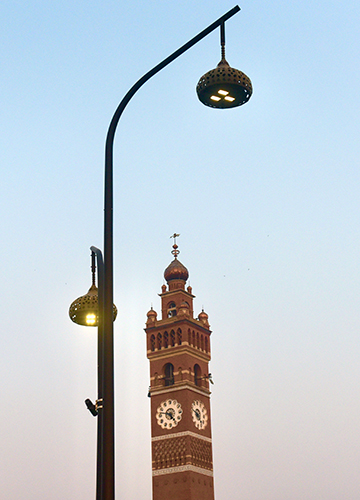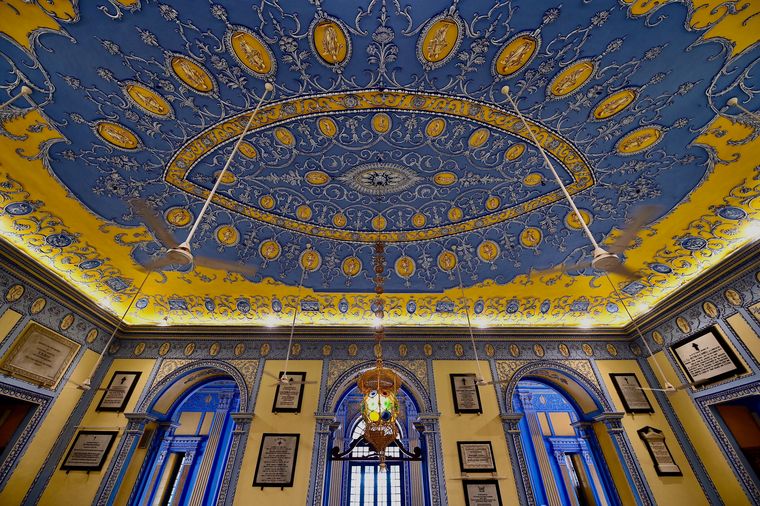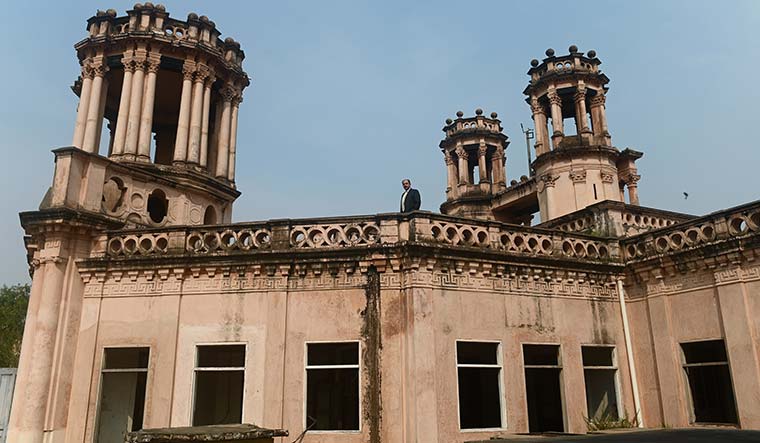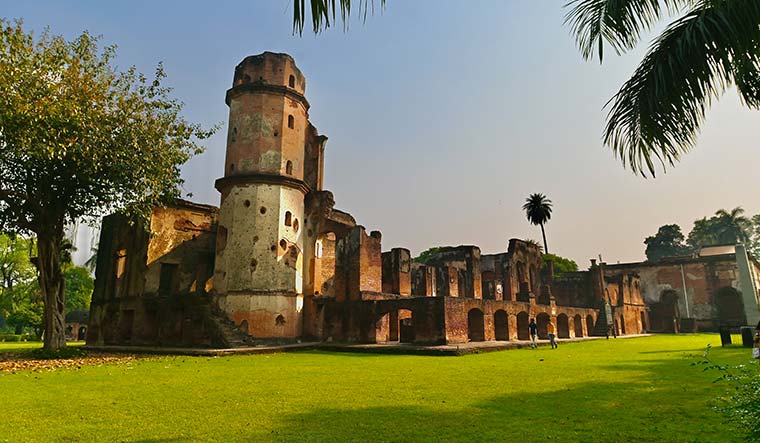Monument, memorial, mausoleum or landmark—no building is ever just that.
From the depth of their foundations to the sweep of their canopies, buildings are dialogues embracing geographical and human spaces. They tell tales; some forgotten, some readily remembered.
And many, like Lucknow’s Husainabad Clock Tower—India’s tallest mechanical clock tower—add to the script of some of the most important stories of the present. In January 2020, this tower became the backdrop to protests against the Citizenship (Amendment) Act. Standing at a height of around 220ft, it is referred to as the country’s Big Ben—a tenuous connect at best. It has a mix of various styles that influenced its architect Richard Roskell Bayne during his travels through Cordoba, Spain, and Marrakech, Morocco. (The Big Ben is in the Gothic Revival style).
In 2010, two Lucknow residents—Capt Paritosh Chauhan, who is serving in the merchant navy, and Akhilesh Agarwal, a mechanical engineer—volunteered to get the long-dead clock running again. They discovered that the original movement was gone; the bronze and gunmetal used in its six foot long and three foot wide clockwork was stolen. There were no original drawings and manuals to help. The best guide was the bench on which the clock rested, with holes for where the shafts of the movement had gone in.
Chauhan and Agarwal describe it as the “DNA of the clock”, from which they had to piece together a dinosaur-like being.
Since 2012, when it started ticking again, the machine has been patchily managed. It works only intermittently. The duo says that the upkeep requires “the right attitude, commitment and skilled craftsmen”—which they cannot ensure, as they are not part of the Husainabad Trust that manages the tower and other properties.
Somewhat better preserved is the Rumi Darwaza, a public gateway, which is the symbol most often used to depict Lucknow in travel literature. There is speculation that it is similar to a portal in Constantinople (now Istanbul)—in recognition of which the Darwaza was called Kustuntunia in the 19th century. Others have seen in it a resemblance to the Sublime Porte of the Ottomans. Regardless of its foreign references, behind the Darwaza’s construction by Nawab Asaf-ud-Daula lay a humane story. In 1784, as a great famine swept through the land, the Darwaza was conceived to give employment to some 20,000 people.
Some monuments have a better chance of speaking for themselves. The Constantia, one of the homes of Lucknow’s most popular European resident Claude Martin, is one such landmark. A Frenchman, Martin became a major general in the British East India Company’s Bengal Army. The French Baroque building today houses La Martiniere College, one of India’s best-known schools for boys, and is a popular destination for movie shoots and magazine spreads.
The centrepiece of this two-century-old structure is a tower crowned by a dome. Under this dome is a chapel, adorned with figures and frescoes in the Wedgwood style. In 2013, the school’s current principal, Carlyle McFarland, initiated a restoration, driven more by urgent concerns such as crumbling walls. On a property that was originally around 400 acres, repairs were not new. However, the triumph of this restoration lay most visibly in its ornamental aspects and staggering attention to detail.
McFarland said the stucco work was as close to the original as available information revealed. Gone, for instance, were the mango leaves that had replaced the original acanthus leaves of the decoration, simply because artisans who made the interim repairs had no ready references for original Greek ornamentation.
The restoration required “a sense of affection” apart from the more practical money and planning, said McFarland, who is an alumnus. In 2016, these efforts were recognised by the French government, which conferred a medal of honour for distinguished service on Ansaruddin, the painter who led the repairs.
The Château de Lyon, another home owned by Martin, has been put recently on the tourist map after the larger building it is part of was thrown open to the public. This Lucknow mansion is named after Martin’s birthplace in France.
Prateek Hira, the president of Tornos, a company that describes itself as an ‘experiential travel company’, said that the residence offered a “fuller experience” of the evolution of Martin’s architectural style, which was perfected over several structures in and around Lucknow. It is thus a template from which Lucknow can be better understood.
The wonders of the structure, better known as Kothi Farhat Baksh, are still being unravelled. Its unique feature was rooms that were submerged in the waters of the Gomti River; these rooms functioned as an automatic cooling system for the floors above.
Meanwhile, conversations about the schoolboys who walked Constantia’s hallways are carried on in one of Lucknow’s most visited landmarks—the Residency. The building was the official home of the British resident general at Awadh, and was besieged for more than five months during the revolt of 1857. It was here that the British suffered their worst losses, before recapturing the city on November 17, 1857.
This siege, the stuff of military folklore, also saw schoolboys being called upon to serve the British army—for the first time ever. The original Residency was a complex of 28 buildings, of which only six remain intact.
Its importance however remains unchanged.
“It is as significant to the besieged and the besiegers,” said Vipul B. Varshney, the convenor of the Indian National Trust for Art and Cultural Heritage, Lucknow.
Varshney, who has organised heritage walks around the complex, said that if there was just one monument in Lucknow that the British tourists had on their must-visit list, it was the Residency—especially its cemetery.
A different connection to the world is found at the Rauza-e-Kazmain, a replica of the mausoleums of the seventh and ninth Imams in Iraq. Unlike the city’s other, perhaps better known Imambaras, this one has two large minarets and four domes covered in brass—as opposed to the more commonly found stone. The ones in the original shrine are covered in gold.
Completed during the reign of Nawab Wajid Ali Shah in 1852, its building was initiated by one Jagganath Agarwal, a Hindu who upon conversion had taken the name Sharaf-ud-daullah. It is thus a fitting tribute to the city’s past of rich communal amity.
Athar Abbas, a maulana who serves at the mausoleum, said that the replica in Lucknow, too, had wish-granting powers like the originals in Baghdad. “It is faith which makes it so beautiful,” he said.
Faith being just one element of the rich dialogues that these buildings symbolise and sustain.






